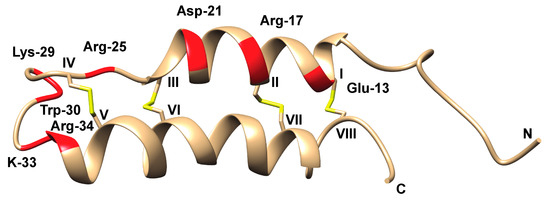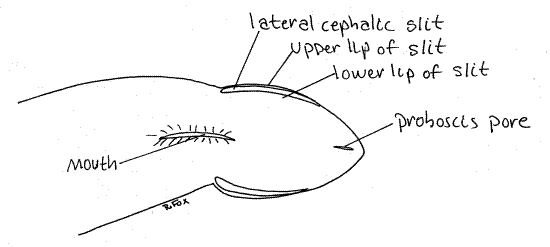Hey all!
This is the finale on our journey with the Cerebratulus lacteus! I dove into some research about the milky ribbon worm’s embryo and came across the Developmental Biology Journal, with a piece entitled ” β-catenin is required for the establishment of vegetal embryonic fates in the Nemertean, Cerebratulus lacteus“. Well, that’s a mouthful– but what does this mean for our milky ribbon worm? Essentially, this journal piece goes in-depth on how the embryo of C. lacteus— specifically, how this protein has an effect on the formation of the mesendoderm layer of the embryo. The purpose overall was to figure out how beta-catenin affects embryo formation in the Cerebratulus lacteus and if there was any other determining factor in the organism affected by the protein. There are typically 3 germ layers of a triploblastic organism: the endoderm, which is the inner layer, the mesoderm, which is the middle layer, and the ectoderm, which is the outer layer. The mesendoderm is the layer of the embryo that becomes the mesoderm and the endoderm; it is common among some animal groupings, but not all.
The writers of the paper provided keywords for readers to properly comprehend the information from the paper; the four terms were Lophotrochozoa. development, evolution, and signaling. Lophotrochozoa refers to one of the two groupings of Protosomal organisms, mainly those that do not undergo molting, including the Cerebratulus lacteus. Development simply refers to a process of growth and may refer to multiple aspects of an organisms’ life. In the case of this paper, development is tied to the growth of an embryo into a completely formed milky ribbon worm. Evolution can be defined on a large scale as macroevolution, or on a small scale as microevolution. Microevolution refers to changes within a population of the gene frequencies, while macroevolution is the major changes affecting a species due to smaller scale evolutionary changes. Signaling can be an indication that an event has taken place.
The hypothesis for this experiment is that β-catenin plays an important role in the “gastrulation, the specification of the endoderm, and establishment of dorsoventral polarity in C. lacteus.” This is still quite a loaded statement, so let’s break it down: The researchers in this study believe that based on the history of the protein beta-catenin and its behavior on other organisms, it affects multiple aspects of the milky ribbon worm embryo formation. Specifically, the protein is key for the folding of the vegetal plate to produce the mesoderm (which is gastrulation), then give the mesoderm its functions to make other components of the embryo, like the formation of the internal organs (specification), and the formation of poles in the embryo. The numbers labeled in the visual below display a fertilized blastocyst with the abembryonic pole at one and the embryonic pole at 2.
The image displays the poles of a fertilized embryo, as described above.
http://www.embryology.ch/anglais/evorimplantation/furchung04.html
There were many preparations conducted in the methods of this experiment, but many related to the extraction and cloning of β-catenin protein to observe in C. lacteus embryos. Our main focus is on how this protein affects the milky ribbon worm embryo fate. The methods that actually involved the Cerebtratulus lacteus included the ‘preparing’ of the embryos and maintaining them in specific conditions to prevent bacterial growth before testing and staining endodermal cells of the milky ribbon worm with the enzyme esterase to physically see nuclei inside of the larva. Following these procedures, some larva were injected with a fluorescent molecule called morpholinos to observe the behavior of the embryos with the β-catenin; those not injected were considered control larvae. It was found that the β-catenin was affecting all of the hypothesized aspects of embryo development, but it is not required. Compared to the normal formation, embryos injected with morpholinos developed odd shapes– additionally, the endoderm did not form, and there was not any gastrulation as seen from the staining results.
What do these results mean for the C. lacteus? The milky ribbon worm is not necessarily positively impacted by the β-catenin on endodermal tissue, and the hypothesis was not supported. It was also concluded that due to the lack of gastrulation of the milky ribbon worm embryos, there was more of the ectodermal layer produced. Without the folding to produce the endoderm, there was an excessive amount of ectoderm tissue in the worms. Other than this, the embryos behaved normally– the only difference was the lack of a true endoderm layer. The main points of the paper worked to understand how the embryos behaved, in terms of if there was loss of function (when embryos did not behave like controls, lacks embryo layers, or lacked movement) or gain of function (in which there was over-expression leading to too much tissue or particularly odd behavior normal milky ribbon worms did not usually do).
These findings are new because the Cerebratulus lacteus is not well researched. This paper is the only experimental research studying various aspects of the milky ribbon worm embryo is relatively new information about the organism simply because not much is know about it. These findings also help us try to understand more about how animals develop, specifically how organisms in Phylum Nemertea develop into their final adult states.
This visual shows the milky ribbon worm in its natural environment!
https://www.alamy.com/cerebratulus-lacteus-galicia-spain-image60961726.html
Journal Article information: https://www.sciencedirect.com/science/article/pii/S0012160608001681
Authors: Jonathan Q. Henry, Kimberly J. Parry, Jason Wever, Elaine Seaver, and Mark Q. Martindale
Journal and Page Numbers- Development Biology, Volume 317, Issue 1. Pages 368-379
Citations –
https://www.cell.com/cell/fulltext/S0092-8674(01)00307-5
https://www2.gwu.edu/~darwin/BiSc151/Lopho/Lophotrochozoa.html
Nusnbaum, Matthew “2- Evolution, Speciation, and Phylogeny” Powerpoint.
https://embryo.asu.edu/pages/mesoderm






